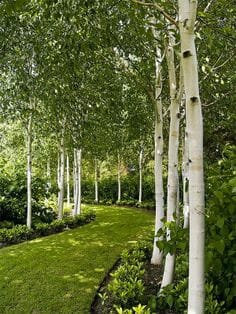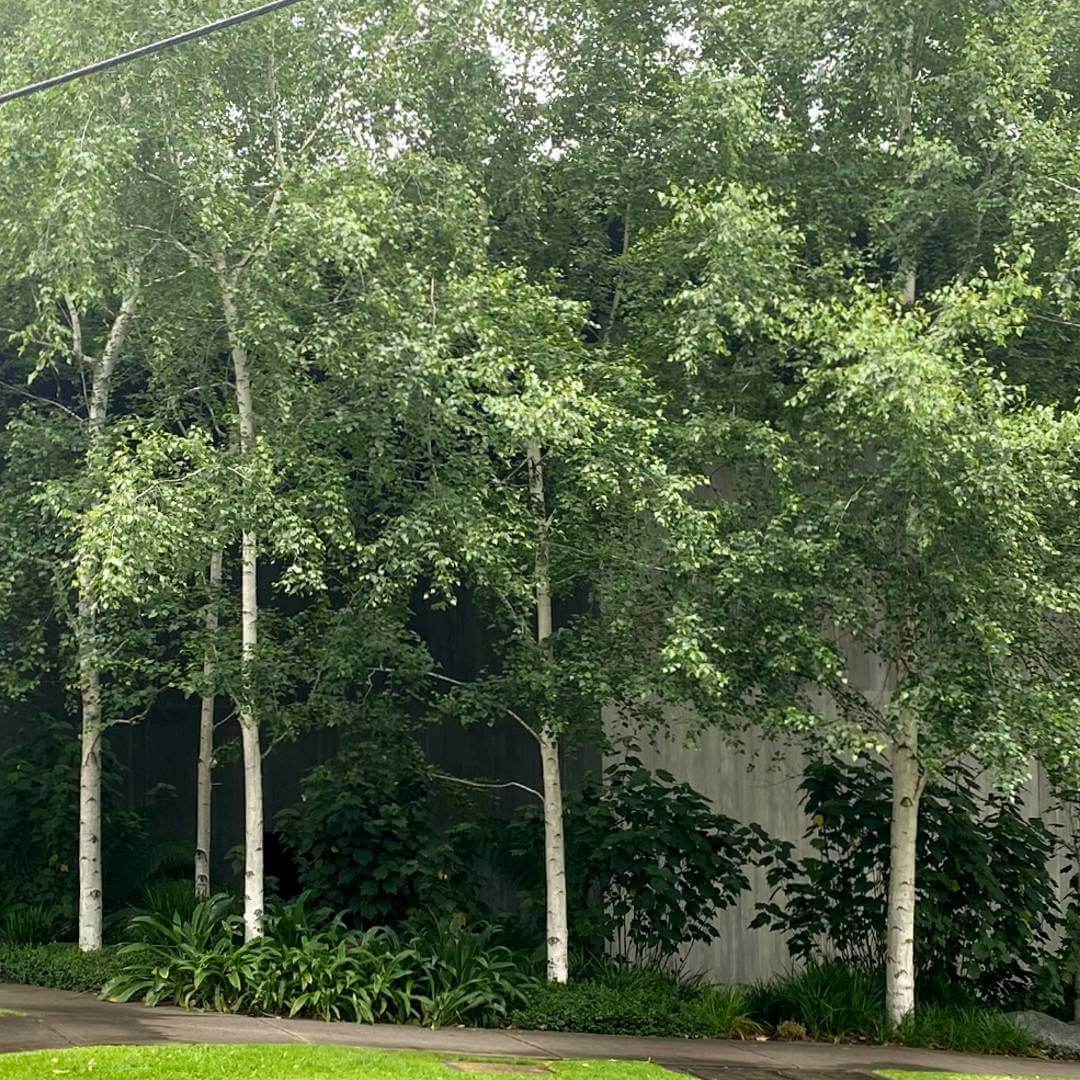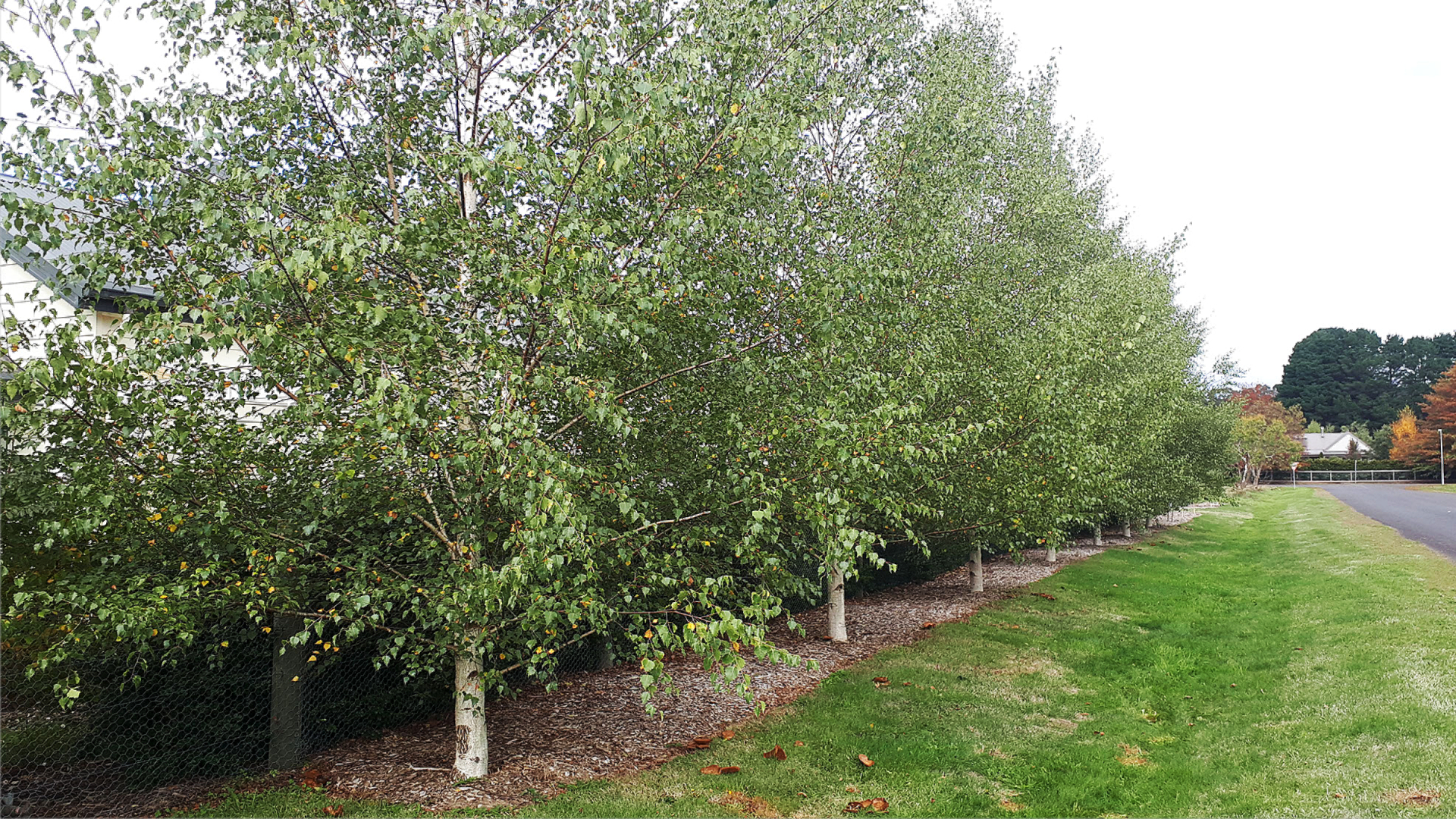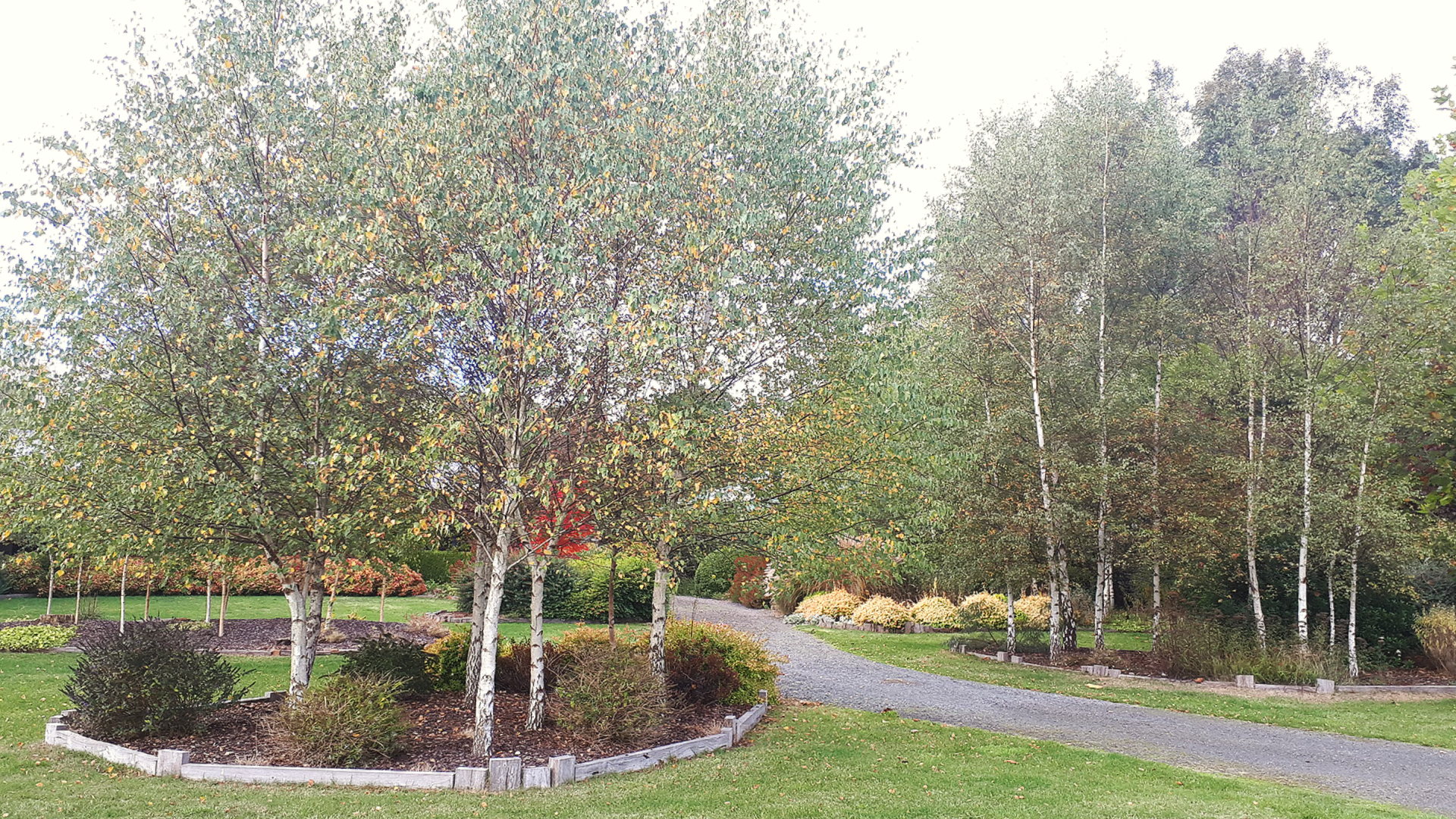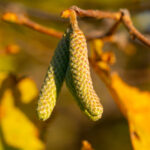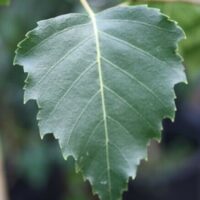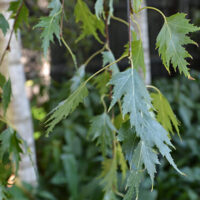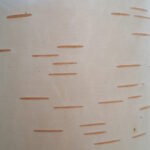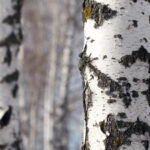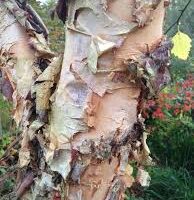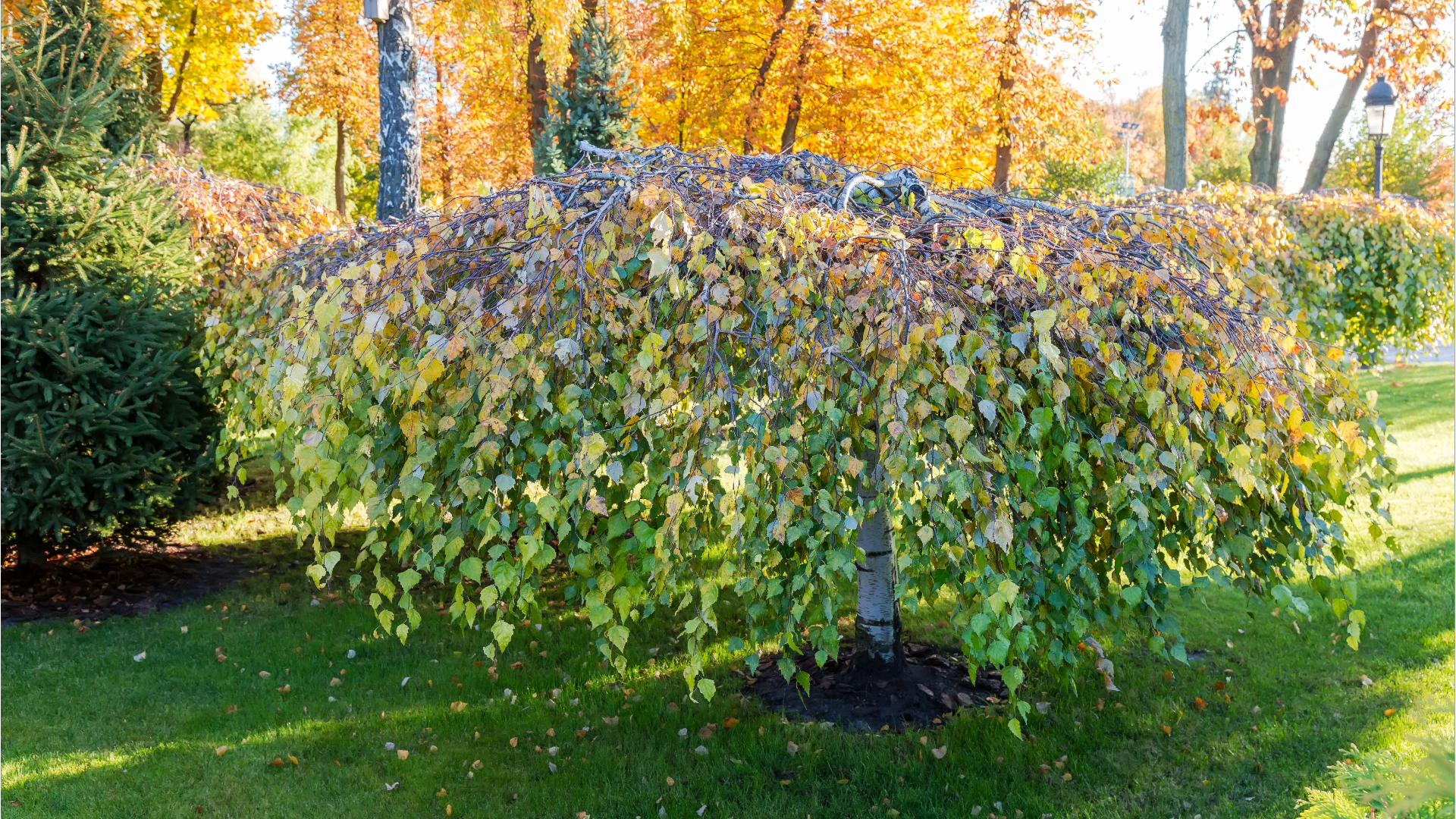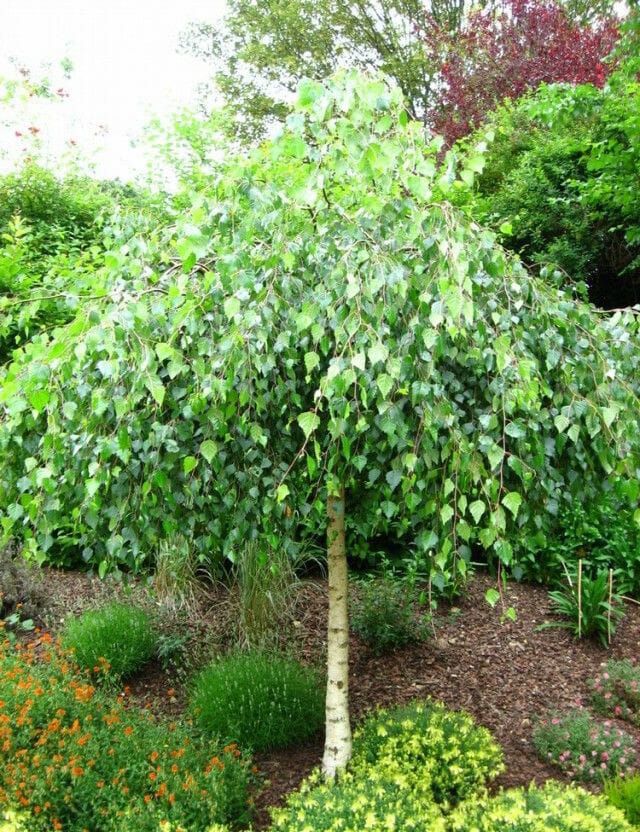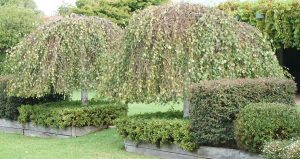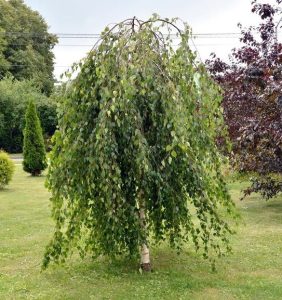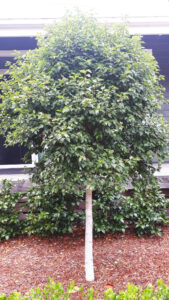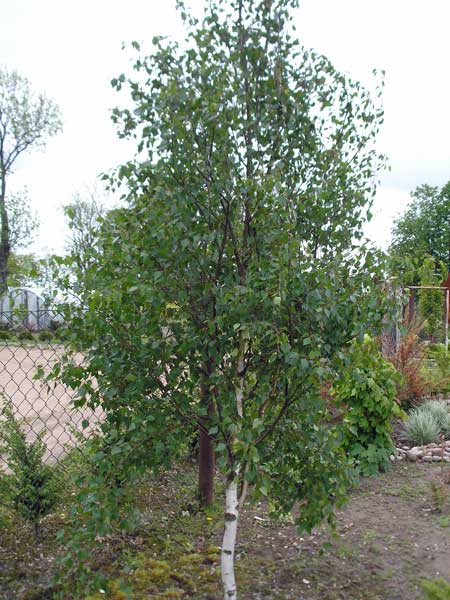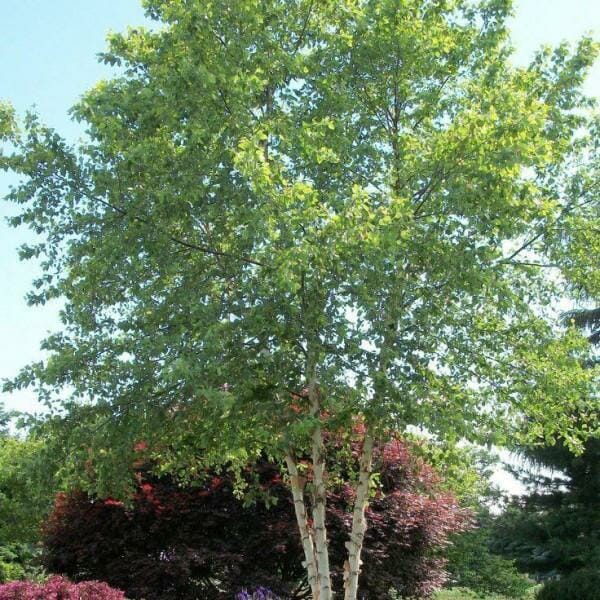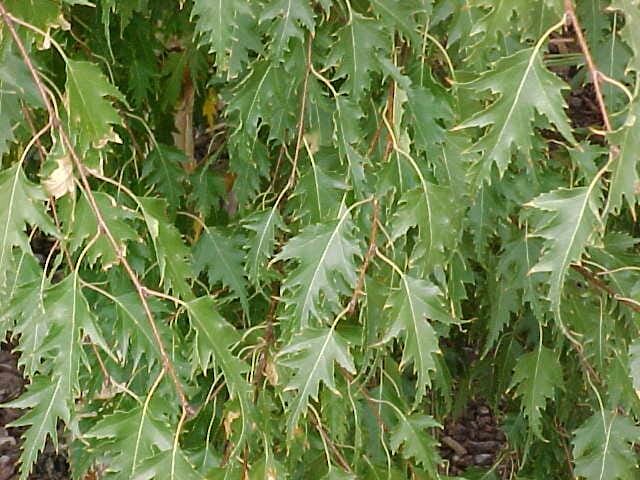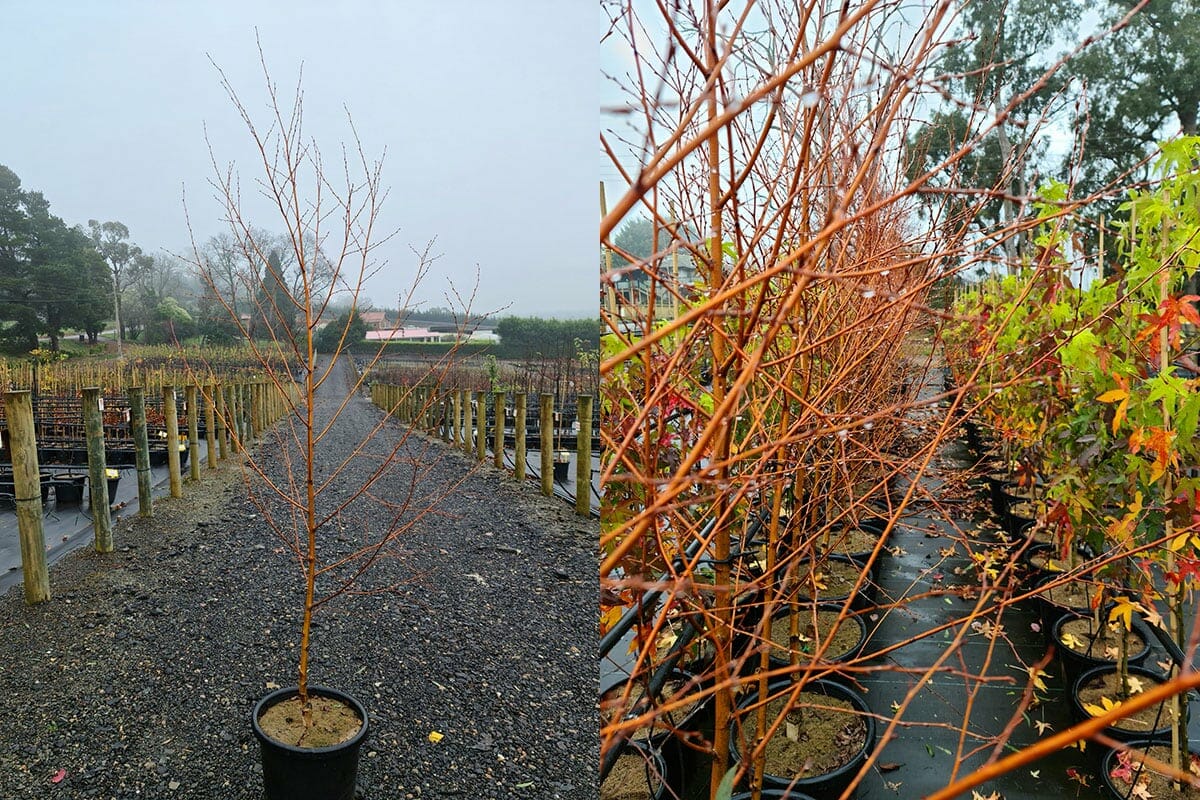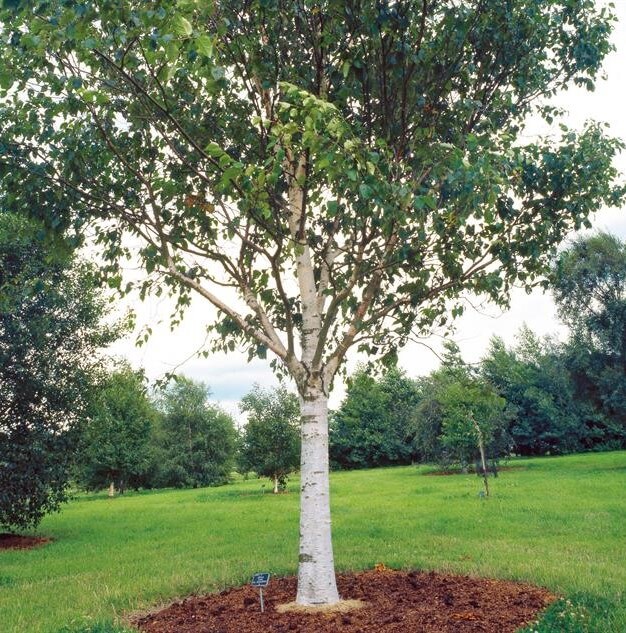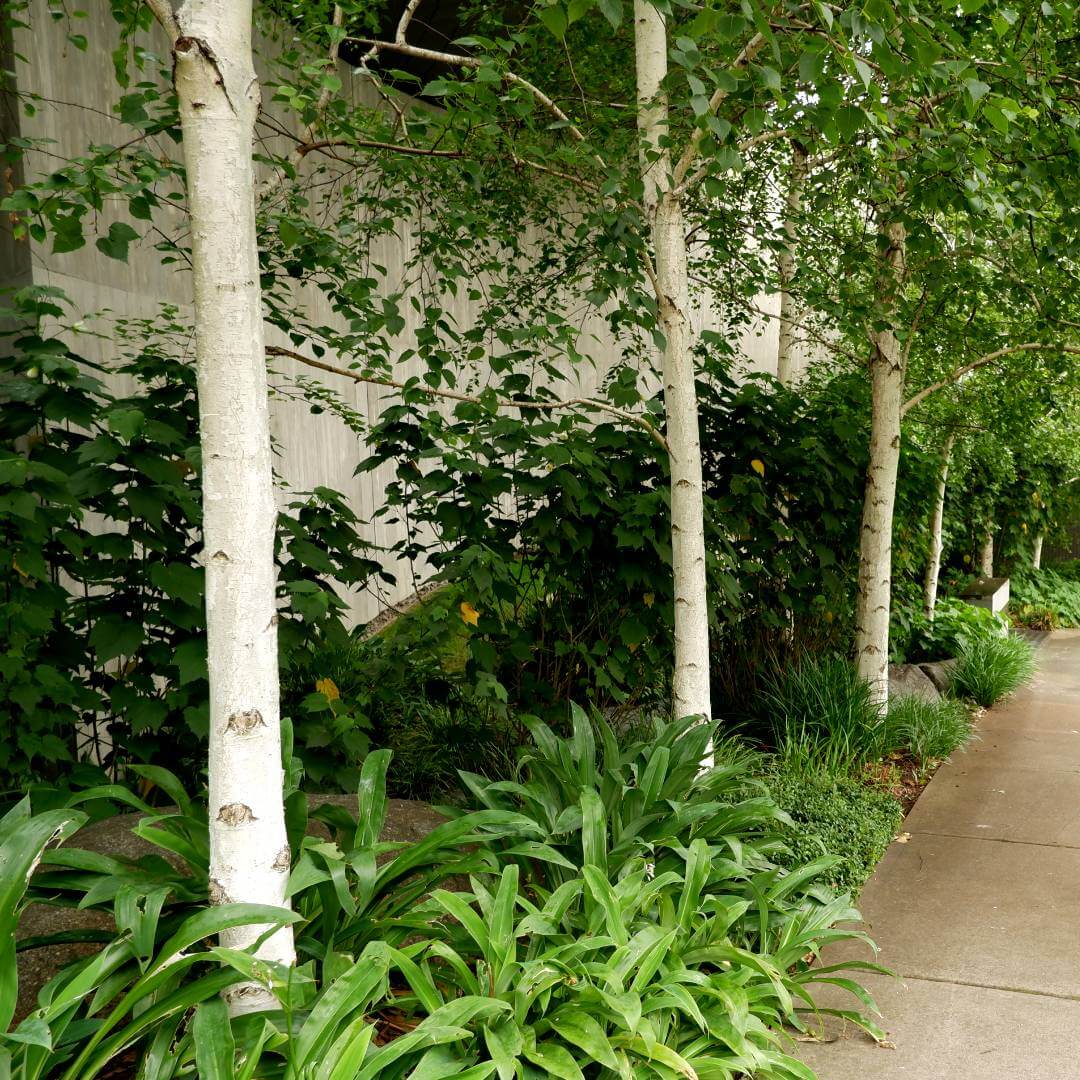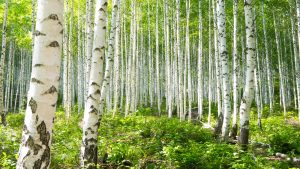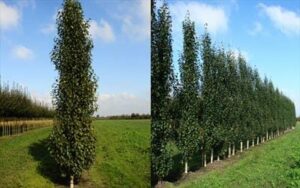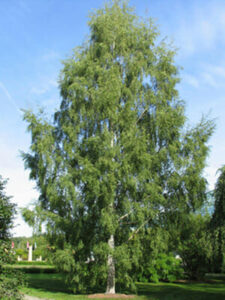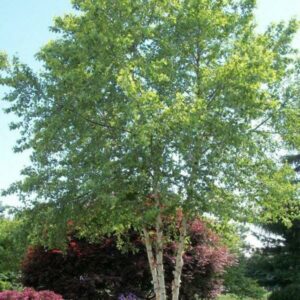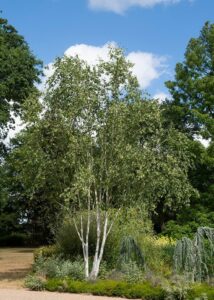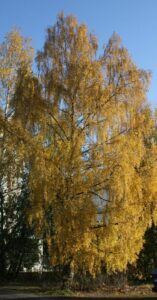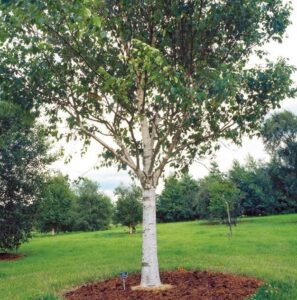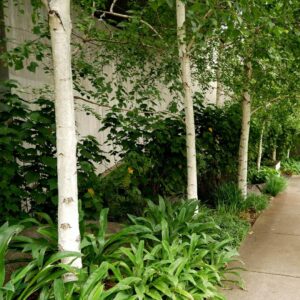Common Names: Birch, Silver Birch, Warty Birch, European White Birch, East Asian White Birch
Origin: Asia, Europe, Northern America
- Famous white bark
- Delicate, fine foliage, autumnal yellow
- Planted in avenues, driveways, in groups or as a feature
Birch, in particular the ‘Silver Birch’, are extremely popular, easy to grow trees found throughout cold climate gardens across Victoria. Soft green lacy foliage forms dappled shade in the summer turning gold in the autumn and in winter you have a brilliant white trunk with reddish brown hanging branches. Other varieties range from pure white to glossy brown, some displaying pinkish-brown bark which peels in fine
strips like paper – once used as writing material.
Ultimately Birches don’t get too large when compared with Elms, Oaks, Ash, or Liquidambar, nor are their roots overly aggressive. They are quite shallow and generally don’t go for the pipes. ‘Silver Birch’ can be used as a specimen or they can be planted in a clump of 3-5 trees. The advantage of clump planting or ‘copses’ is that multiple white trunks have a far bigger impact than a single tree trunk, and when birches are clumped close together the competition between the trees stops them from becoming too large.
Birches allow gardens and lawns to flourish beneath them making them a perfect choice for planting in lawns, along driveways and avenues as well amongst plants within a garden bed.
SILVER BIRCH VIDEOS
Plant Type: Tree
Uses: Medium Tree (4m-10m), Large Tree (10m+), Feature, Avenues, Driveways, Shade Tree
Care
Sun Requirements: Full sun, part or dappled shade
Water Requirements: Water regularly until established. Once established they are relatively drought-hardy, although they look their best when kept well hydrated.
Soil Requirements: Will tolerate alkaline, sandy and clay soils. They are best grown in moist, well-drained, acidic loamy soil. Mound soil up to encourage drainage in soggy or clay soils. Some varieties tolerate soggy soils thought not the general ‘Silver Birch’
Fertilizing: Slow Release general-purpose fertilizer in spring.
Pruning: Prune after summer, preferably in autumn and well before late winter. Unlike many other deciduous trees that like being pruned in winter, Birches tend to bleed sap heavily so it is suggested to prune before sap begins to flow for the spring new growth (late winter/early spring).
Tolerances: Sun, frost, snow and mild drought.
Diseases: Slim Flux (fungal) and other fungus, especially rmillaria melea and piptoporus betulinus, Birch Leaf Miner, Borers, Birch Leaf Spot
Key Features
Flower & Seed: Cylindrical yellow-green catkins, seeds are winged seeds from female catkins
Edible: Sap and leaves used medicinally and for consumption, although not commonly
Toxicity: No
Attracts: Small parrots, insects
Which Birch To Choose?
With such a wide variety of Birch, it’s important you choose the right one for the right spot! Check out the brief descriptions of each below and then quickly compare them on our comparison table at the end.
For more, in depth care instructions, go to Additional Information on the individual product pages.
Weeping
Betula nigra ‘Summer Cascade’ PBR
Beautiful weeping habit, flaky bark and green leaves changing to golden yellow prior to fall. Enjoys moist environment near ponds and rivers though happy in drier conditions.
Standard
Betula pendula ‘Lollipop’ PBR
Grafted on a white Birch stem tp create a standard shape. Large bushy head with the bare white stem makes this an easy to manage feature plant for pots and gardens. Foliage is green turning various shades of yellow in autumn.
Upright
Betula pendula ‘Silver Birch’
The most popular and easy to grow out of all the birches. An elegant feature tree, deciduous, small green leaves, turning vibrant yellow in autumn and soft white bark with black ridges.
Betula pendula fastigiata ‘Upright Silver Birch’
An upright specimen tree, with
intertwining branches, encouraging a tight and narrow habit. Leaves change from green to butter yellow in autumn. Used as a specimen, avenue or screen planting.
Betula nigra ‘River Birch’
Vigorous fast-growing, with pink-red bark exfoliating to lighter inner bark. ‘River Birch’ make for a magnificent feature tree.
Betula pendula dalecarlica ‘Cut-Leaf Silver Birch’
A graceful tree with distinctive feathery foliage and white bark. When it matures if has a pendulous habit and stunning autumn colour. This Birch makes for a wonderful feature tree.
Betula pendula ‘Wades Golden Birch’
An upright pyramid-shaped feature tree. New golden growth forms in the winter, later turning a light-green leaves and then back to gold in autumn. The fine branches are gold, turning pink-red in winter with a soft white classic Birch trunk when it matures.
Betula pendula Tristis ‘Snow White Birch’
A beautiful, slender deciduous tree with powdery white bark and stunning autumn colours. Unlike the regular ‘Silver Birch’ this Birch will tolerate dry areas and has a more upright habit.
Betula pendula ‘Moss White’
Stunning bright white bark, the most vivid of all the Birches. Gorgeous yellow foliage in autumn, displaying the white graceful arching branches and stark white trunk in winter.
Betula utilis Jacquemontii ‘Himalayan Birch’
Creamy-white peeling bark, dark-green ovate leaves that turn yellow in autumn, this stunning tree makes a perfect singular feature tree or planted in groups of 3 or 5.
Still having trouble deciding which Birchis right for your job? Check out our quick comparison chart below!
| Summer Foliage | Autumn Foliage | Bark | Max. Size | |
|---|---|---|---|---|
Weeping Birch | Green | Yellow | White with black ridges | 2m (depending on graft) |
‘Summer Cascade’ | Mid Green | Yellow | White flaking to pinkish browns | 2m (depending on graft) |
‘Lollipop’ | Green | Gold Yellow | White, | Standard. 2m max. |
‘Silver Birch’ | Green | Yellow | White with black ridges | 8m x 4m |
‘Upright Birch’ / ‘Pyramid Birch’ | Green | Yellow | White with black ridges | 8m x 2-4m |
‘River Birch’ | Green | Butter Yellow | Brown, shaggy | 12m x 8m |
‘Cut Leaf ‘ | Mid Green, lacey | Yellow | White with minimal black ridges | 12m x 5m |
‘Wades Golden Birch’ | Pale Green | Gold | Yellow / Brown with a white trunk | 10m x 6m |
‘Snow White’ | Mid Green | Yellow | White, minimal black | 10m x 3m |
‘Moss White’ | Mid Green | Yellow | Stark White | 8m x 6m |
Himalayan Birch’ | Dark Green | Yellow | White, peeling | 10m x 5m |




